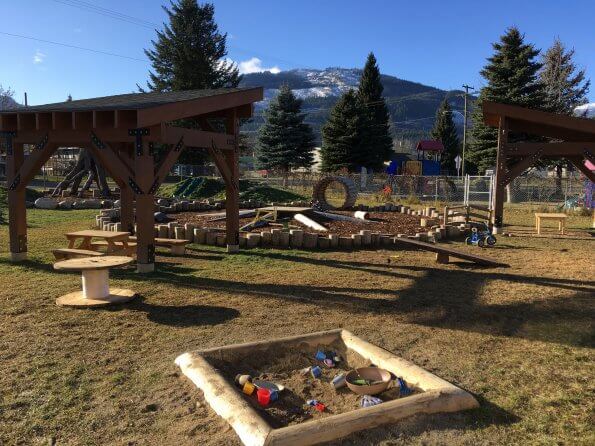
Why natural playgrounds are essential for young children
From infancy through childhood, unscripted outdoor free play is crucial for children’s physical, emotional, social, and cognitive well-being. These early years of exploration and discovery for naturally curious children also lay the foundation for developing healthy movement skills and physical literacy for life.
In today’s increasingly urbanized world, where children’s lives are more structured and scheduled than ever before, one way to encourage active outdoor play is through natural playgrounds. These spaces and their diverse features offer valuable opportunities for experimentation, the development of physical literacy, and the encouragement of healthy and positive relationships with nature.
At nature-based playgrounds, children can crawl up and roll down hills, mix soil and water into a magical concoction, stomp through puddles, and practice their balance as they totter along logs and stumps, arms outstretched in a game of Follow the Leader. All ages and abilities can interact and learn together, developing their collaborative play, language, and problem-solving skills.
Natural playgrounds have also been linked to longer play sessions and children engaging in more aerobic and bone and muscle-strengthening activities than when using traditionally constructed playgrounds.
“Natural environments represent dynamic and rough playscapes… The topography, like slopes and rocks, afford natural obstacles that children have to cope with. The vegetation provides shelters and trees for climbing. The meadows are for running and tumbling.”
–Ingunn Fjørtoft in Early Childhood Education Journal
The authors of a 2017 study noted that given the number of waking hours that children spend in daycare, these centres’ outdoor spaces are often the primary outdoor play experience for many preschoolers. Increasingly, early childhood centres and educators are embracing natural playgrounds versus the traditional out-of-the-box, post-and-platform equipment that has been the norm for the past few decades.
But is there really a difference in play value and children’s health and well-being when playing in traditional out-of-the-catalogue playgrounds versus natural playgrounds?
Research and early childcare educators say yes!
Related read: Let them get dirty and other tips for getting kids active in nature
As an extension of the classroom, outdoor spaces with natural features stimulate discovery and exploration—how does clover grow? Do puddles splash? Does wet bark smell good?—and uniquely engage children in play-based learning where skills are achieved naturally.
This video from Scotland shows how transformative natural playgrounds can be for educators and children:
Playground photo courtesy of Revelstoke Child Care Society.







This is an amazing video and very inspiring! I just wanna watch it so many times. It’s for sure applicable anywhere, I had this idea for Kenya and it gave me most of the pieces I needed. Thanks team